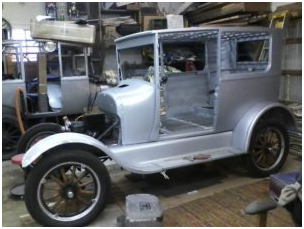Our Guide to Using Steel Rust Protection the Right Way
It’s crucial to prevent rust on steel structures and equipment. Otherwise, they are prone to deteriorating sooner, depending on the environment they are exposed. There are many steel rust protection methods, and most include the use of coatings. However, improper use and poor surface preparation can make even high-end solutions fail. Use this guide to avoid any mishaps.
Follow basic safety guidelines.
High-quality coatings may have minimal VOCs, but that doesn’t mean they are not harmful and safe to inhale. So, make sure you are wearing a NIOSH-approved half-mask organic vapor respirator with a P100 filter and a filter cover, and change the filters when or if they become saturated. Don’t forget to wear protective clothing, goggles, and gloves when setting up, during the application, and while cleaning up.
Apply coatings only in a well-ventilated area with fresh air, and avoid conditions that may result in a fire. That means don’t smoke or use any heating element or other things that can ignite.
Prepare the surface
The surface that requires steel rust protection must be completely dry, without loose paint, moisture, rust, mildew, dirt, wax, loose particles, oily substances, and other surface contaminants. Remove all traces of debris, and when necessary, clean the substrate before application. Lightly scuff existing paint to help the new coating stick. Remember that rust protection products work best when applied in direct contact with bare metal or a rusted surface.
Make your project successful.
The best steel rust protection coatings are ready to use and don’t require thinning. However, you may need to adjust your application equipment. Here are more points to consider:
· Thoroughly stir the coating manually for at least three minutes.
Avoid shaking the can, and make sure there are no air bubbles.
· Pour out only what you intend to use in an hour and reseal the
can quickly. Remove any coating residue from the container’s rim before
resealing.
· Prevent rain, mist, sweat, and other contaminants from getting
into the coating. Even a few drops can dramatically impact the results.
· Apply coatings in thin, even coats to avoid bubbling and
failure.
· Wait two to six hours , but no longer than12 hours before
recoating.

Comments
Post a Comment